CERN and the collider through the eyes of a tourist
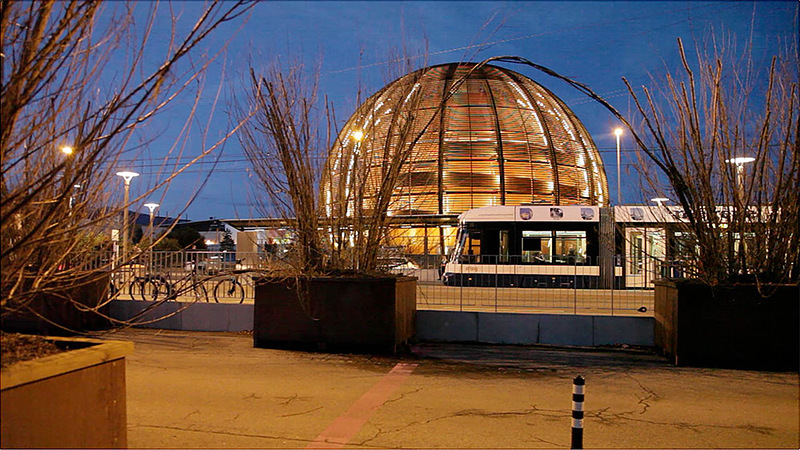
Recently our book for children “Simple Science” was published, about which I already told earlier. After a couple of weeks, the second comes out, then the third and fourth. All of them are simple experiments for children 5-12 years. But now I was thinking about a more adult audience - middle and high school students. Of course, they can also make experiments from the released book, but youthful maximalism will make itself felt, and we will get in response “What kind of childhood experiences are these ?! Where are the serious things ?! Where are the experiments with elementary particles, radiation, the speed of light, DNA, liquid nitrogen and so on? Where are the instructions on how to make a pocket collider? ”
And damn, they're right! I have not found a single book on sale, where there would be "serious" experiences that can be repeated on their own and at home. We need to fill this gap, start searching for the material and its structuring. And, of course, first of all I went to ... CERN. I understand that my approach will seem delusional to many, but it seems reasonable and logical to me :) After all, to do something interesting, you must first plunge into this “interesting” with your head and, having figured it out, try to transfer your impressions to others.
')
CERN
But first, a little about CERN, which is described in Wikipedia as the European Center for Nuclear Research. The name contains the word "nuclear" and now it can confuse the viewer and lead him away to nuclear power plants or, worse, nuclear bombs. I did not see any bombs or even a hint of them. But you can argue: they hide them and plot the terrible. Maybe. But I have another argument: if they are such insidious villains, they must be a very secretive and secret organization. In fact, I saw only the positive faces of the employees, complete openness in the stories about their research and willingness to cooperate. And the fact that I got there and studied one object or another for two days speaks in favor of my argument.
And my study of CERN began with a simple correspondence. Anatoly sent the first letter there on October 2, the answer was received fairly quickly, but as standard - “we will consider this possibility.” After a few more letters, Marina Savino was in the copy, which represents the office for relations with non-CERN member countries (such an interesting post). She speaks Russian and, as I found out later, used to live in Moscow. Three weeks later, we had already determined the route, dates and time of the visit, discussed the number of visitors on our part, exchanged contacts, and so on. All about everything took 27 letters. But it was worth it!
Coincidentally, I had planned a trip to Austria just at that time and I had to go by car. And when you are driving 2000 km., Why not rush another 600? So I got to CERN on January 7, 2014.
In today's story, I will not touch on anything scientific or technical. There is a lot of such information on the interesting site Elements.ru . I just wanted to describe the visit to CERN through the eyes of a tourist.
Reception desk
First, I arrived at the parking lot with a barrier, which itself opened in just 10 seconds. It turns out that it does not automatically open, there is a camera there, the guard looks at the number of the car and passes it. Anyone can drive, but only once. The next day, most likely, the barrier will not rise. Well, they told me so later.
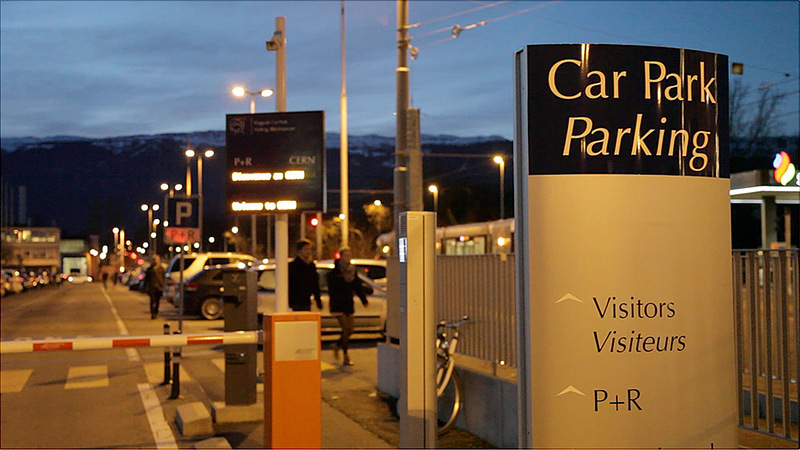
I went to the reception desk, where Marina was already waiting for me at the indicated time.
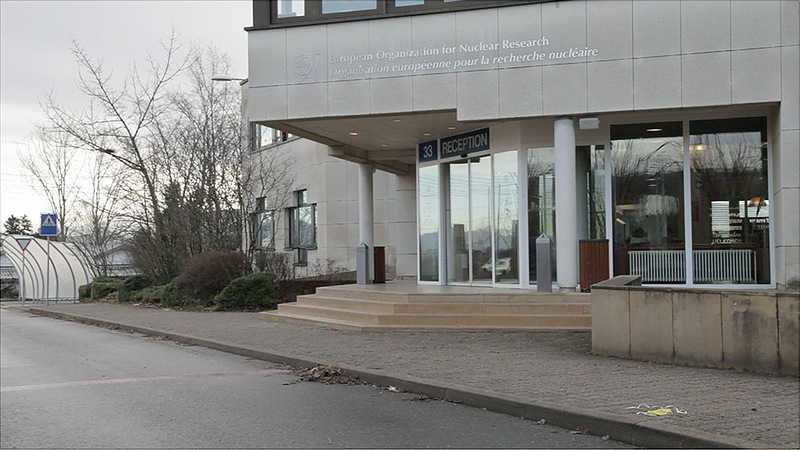
It must be said that all excursions at CERN are conducted only in English or French. And I neither know the one nor the other. And then this gift is a Russian person. She voiced the plan of our excursion trip and we immediately set to work.

And the tour began with a brief lecture about CERN and the Large Hadron Collider with watching a video. I must say that Marina is a skillful storyteller. I forgot to say that I came there not alone, but with my family. It turned out that with me for various reasons, everyone I offered to refuse to go. I tried to understand these people who refused such an opportunity to visit the heart of the world experimental science, but I could not. And my colleagues on the trip turned out to be a wife and son. So, the story of Marina made such an impression on his wife that she changed her skepticism to wild interest and for the next six hours she and I rushed from one object to another. The son was shy at first and clearly was not at ease, but when we went down to the detector, it all took off like a hand.
"Globe"
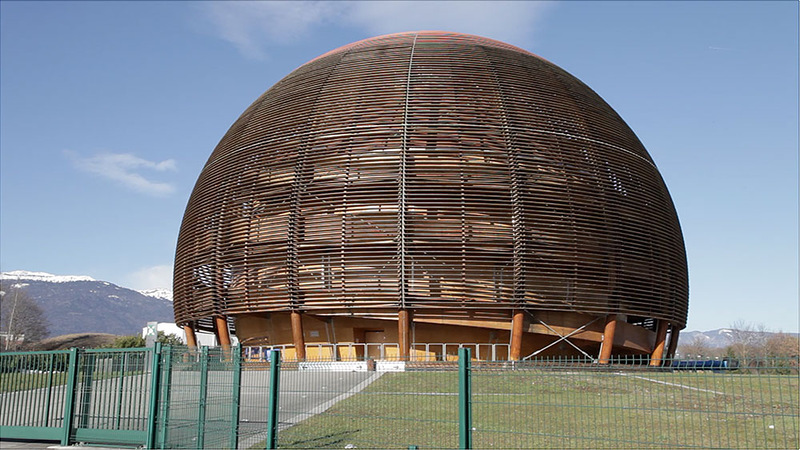
After the lecture we went to the globe. This is such a round building, which is often shown on TV when they talk about CERN. The building is from the side looks rusty such a thing, but in fact it is wooden. In the evening, it is also a great light.
On the first floor is the CERN Museum, in which I met a couple of interesting exhibits: the first particle accelerator that can fit in your pocket.

And three sheets of paper with the first article of Peter Higgs (the Nobel laureate of 2013), in which he expounds his idea about the now open, “Higgs boson”. But in general, it is such an ordinary place in the style of all museums of science and technology.
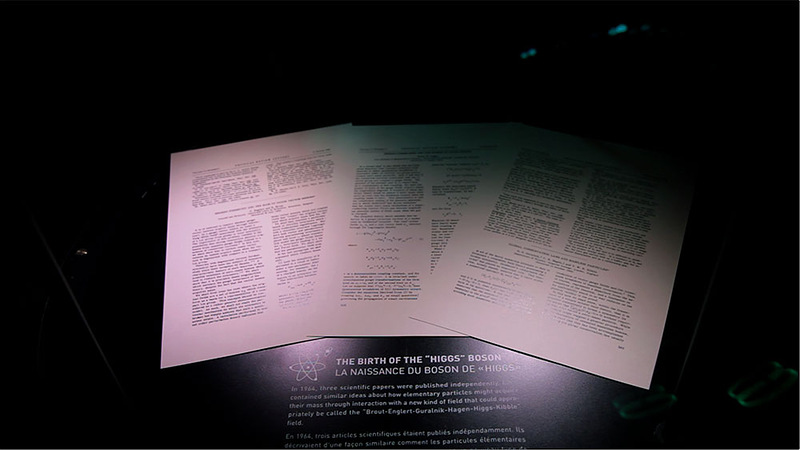
What is on top of this “globe” I forgot to ask.
Public catering
Since we were not in the museum for so long, we had the opportunity to visit the local canteen and eat. This is a place where only employees dine, and access is closed from outside. However, there is still very crowded, but positive and tasty. And also, it seemed to me, not cheap. In general, in Switzerland everything is more expensive in comparison with, say, Germany or Austria. Lunch cost me $ 800. But, most likely, they have any special offers there that I did not know about. And one more oddity - they do not accept cards for payment. Cash only.
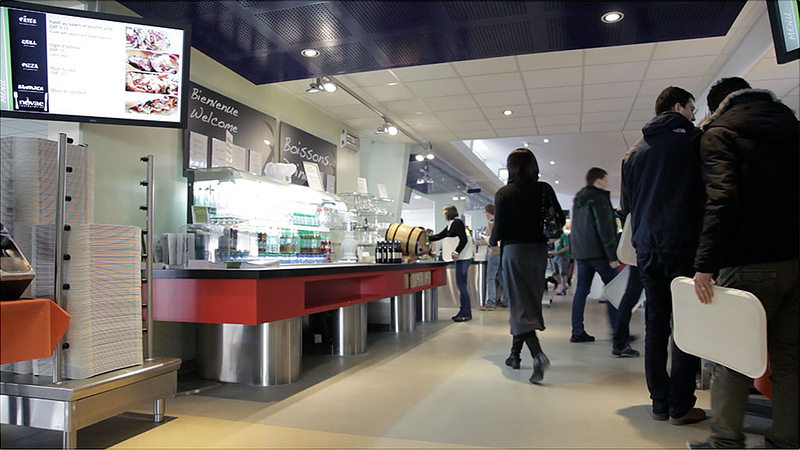

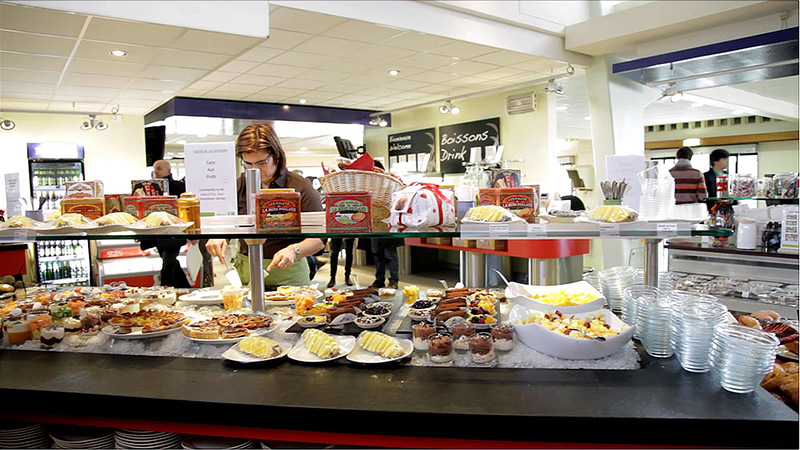
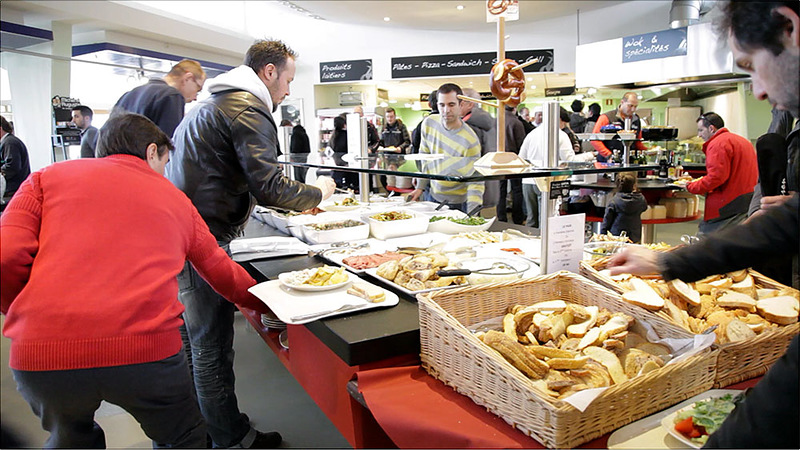
Administrative buildings
After lunch, walked through the corridors of several buildings. At the same time, in order to go from one building to another, you need to go through the third one and exactly on the second floor. To get lost there to spit.



They looked into the assembly hall. Marina said that before it hung a board and the speakers on it were drawing something there. And when it was replaced with a projector screen, it was a scandal. Conservative people, these theoretical physicists.

They even have a post office there.
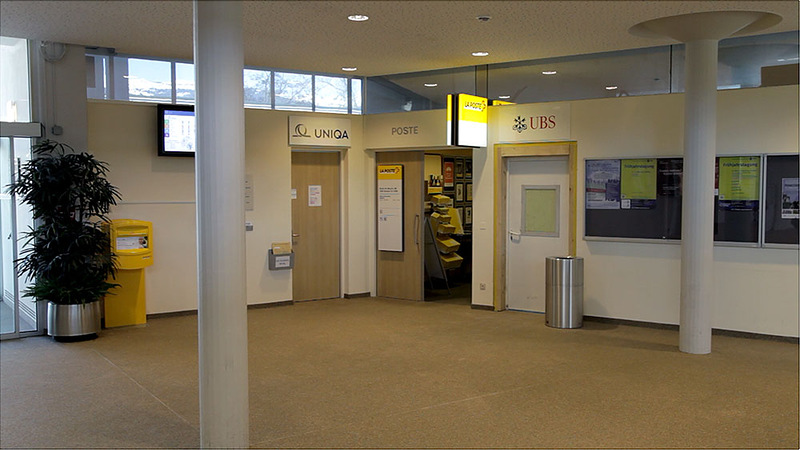
Bicycles
Since inside the BAC tunnel you can only ride small-sized equipment, you can often find photographs where the employee moves along the accelerator on a bicycle. We were not allowed inside the tunnel, but I saw a lot of bicycles on the territory:
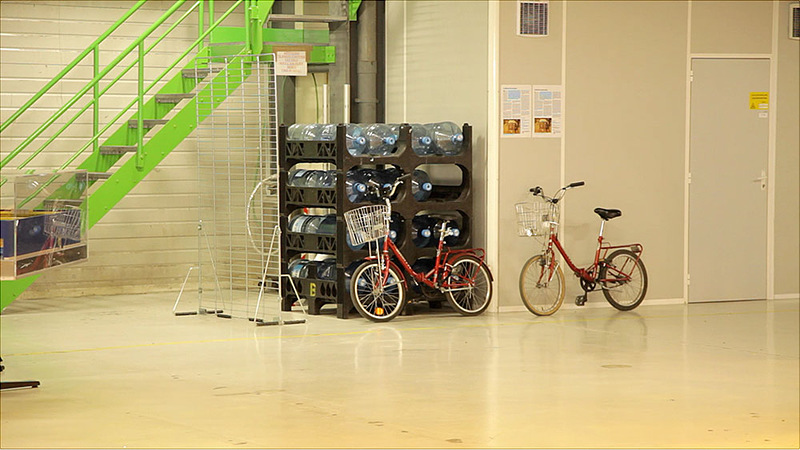
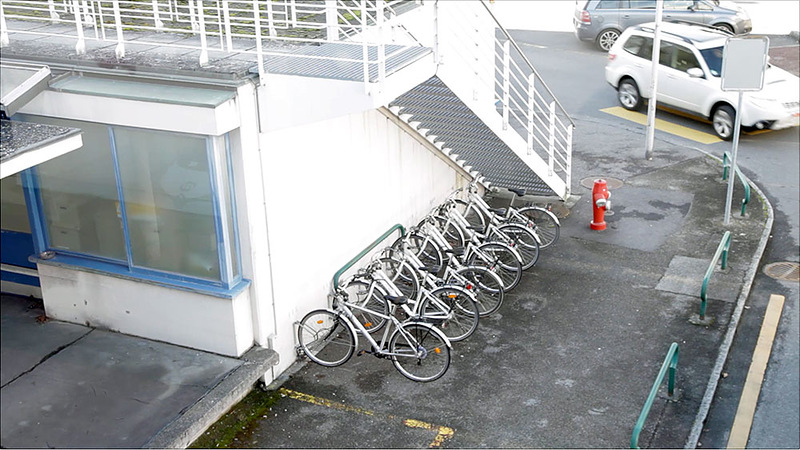

Open-air museum
In the courtyard there is a small lawn, where they pulled out to see the old exhibits (previously existing).
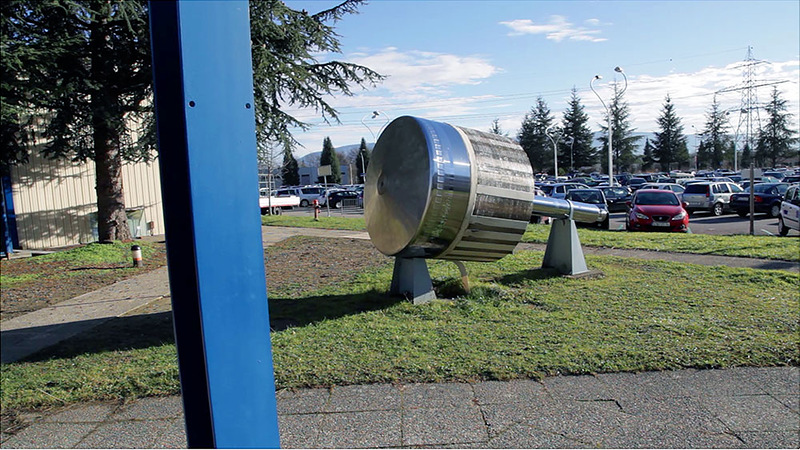
A miniature streets are the names of different scientists.

SM18
The place where we all watched is in Switzerland, right on the border with France. And if you want to show some objects along the way of the tunnel of the Large Hadron Collider, then they put people on a bus and take them to France. Fortunately there is one Schengen zone. And our next destination was already in France, 3 kilometers from the Globus building. We drove there in our car. It was a place where all superconducting magnets are tested, thanks to which it is possible to accelerate protons to such energies. In fact, it is such a large hangar or shop with the name "SM18". It has a lot of interesting things! I will show some pictures from there.
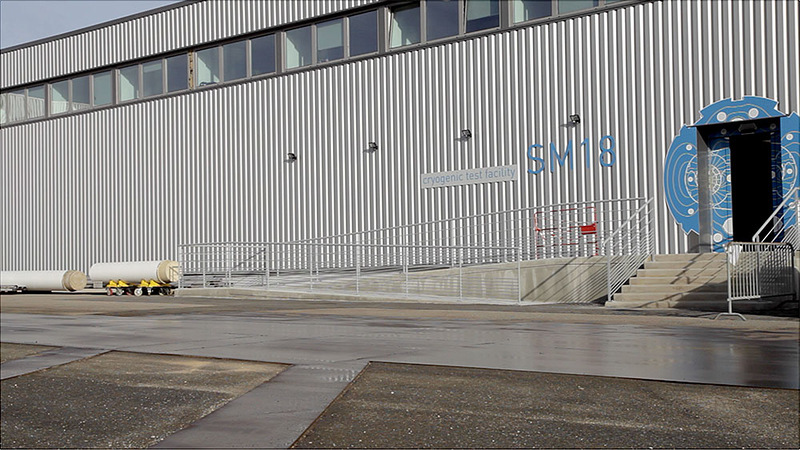
Place of testing and "training" of magnets at low temperatures:
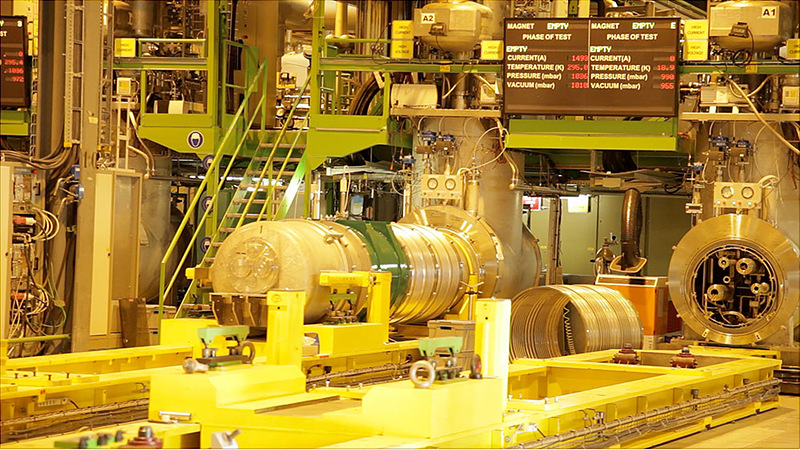

This is a piece of the spent accelerator segment:
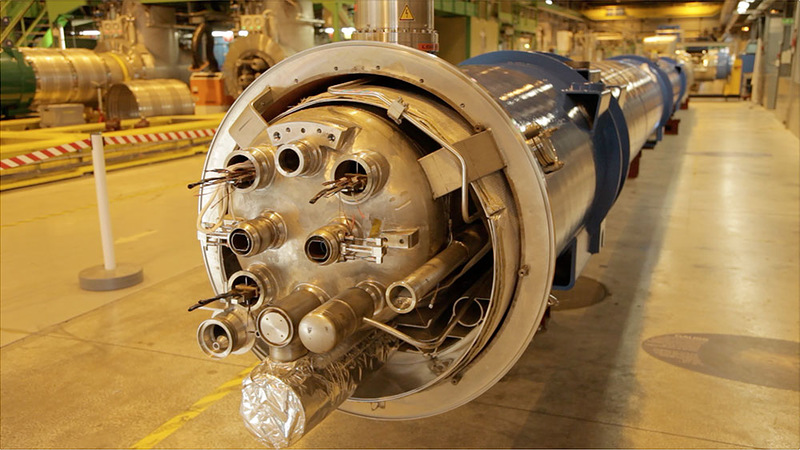

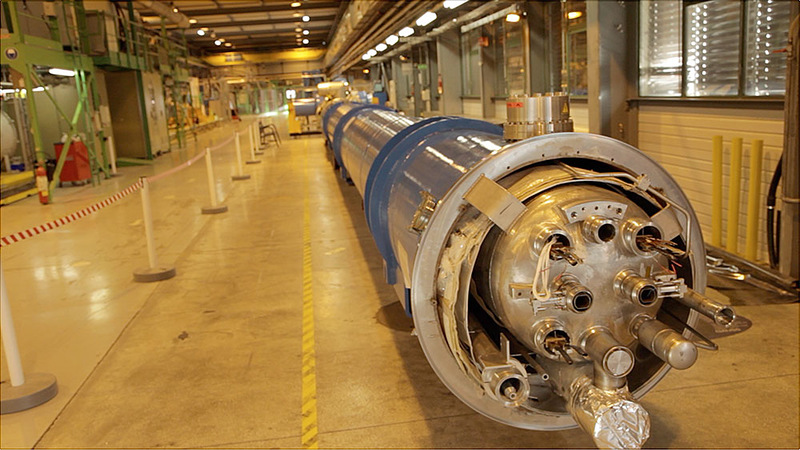
And this is a place that is intended to compensate for the compression of materials during cooling and stretching when heated. In other words - compensator:

And this is the junction of superconductors. In one such place once there was a “problem” and there was a well-known failure several years ago, as a result of which the accelerator stood a lot of time for repairs:

This is how superconductors themselves look like against the background of copper conductors, which are equivalent in terms of current transmission capabilities:
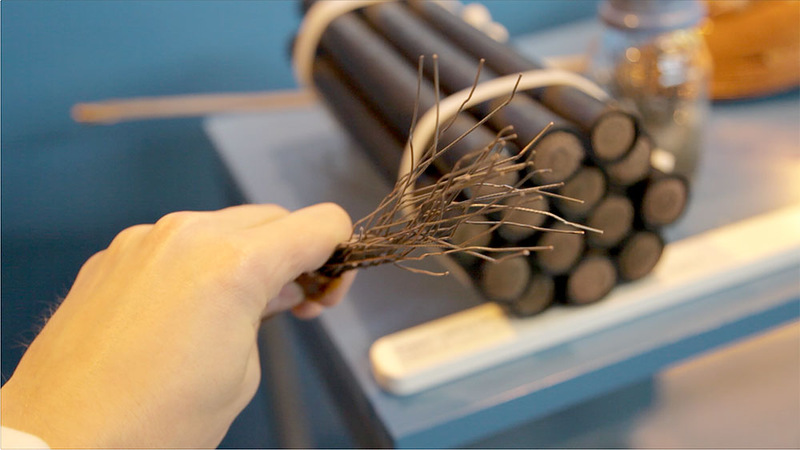
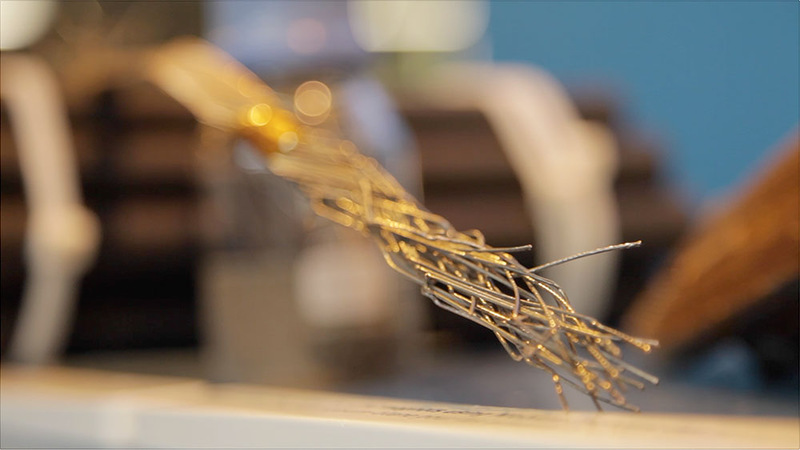
CMS detector
And finally, we went to look at the most interesting place for me - the particle detector. Their four pieces along the path of accelerated particles, we were brought to the CMS. There are Atlas and some more.
At the scene, the three of us were handed over to Alexander, an employee of CERN. He also turned out to be Russian and knew everything about the collider.

And it began. First, we walked past the place from which the detector was monitored:
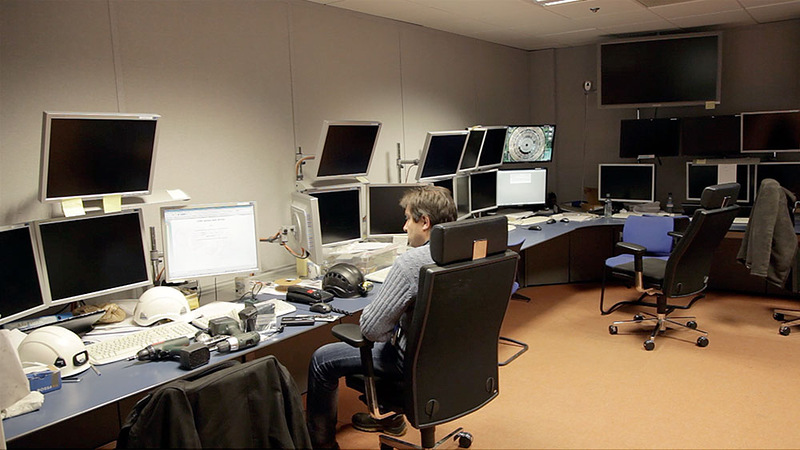
But these guys spoke very loudly in Russian and obviously not about protons :)
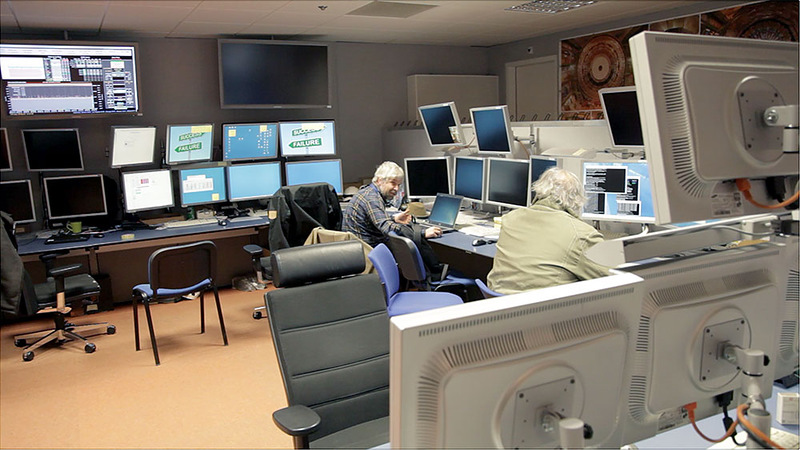
Then there was an elevator and many floors down:
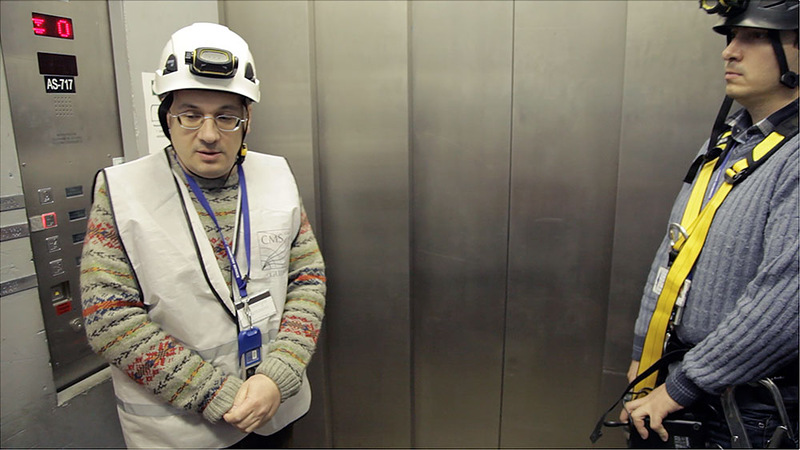
Here are some photos along the way:
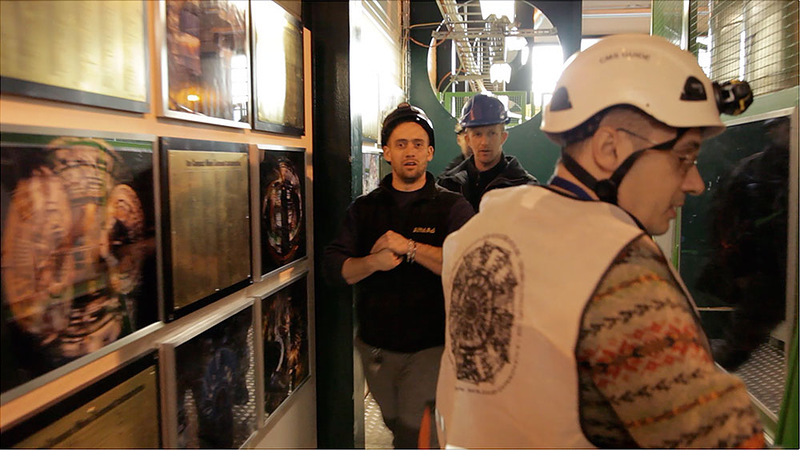

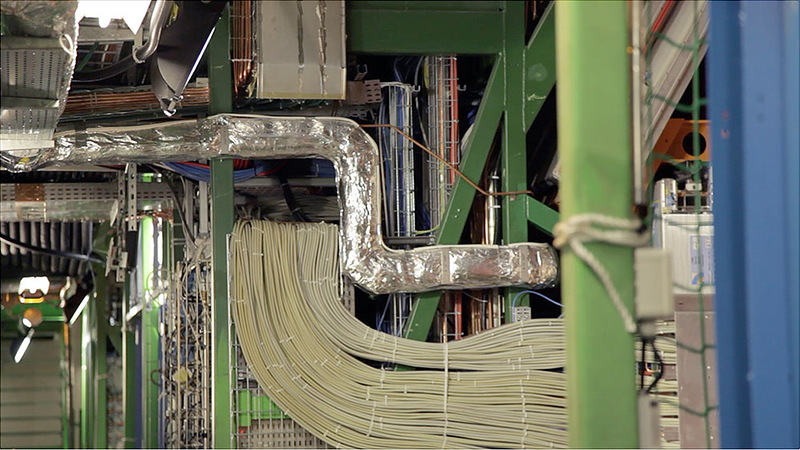
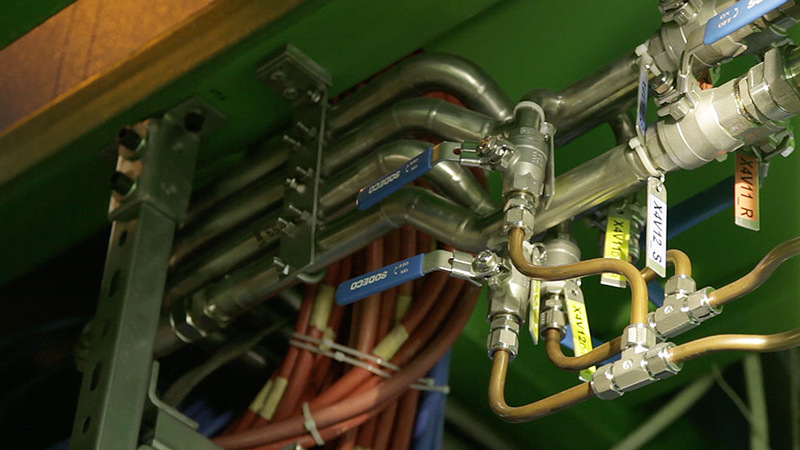
Well, in the end, we are almost there. It remains to overcome the main door with secret access. By the way, Alexander said that right here they shot a couple of shots for the film “Angels and Demons”. I can not confirm or deny - I did not watch the film.
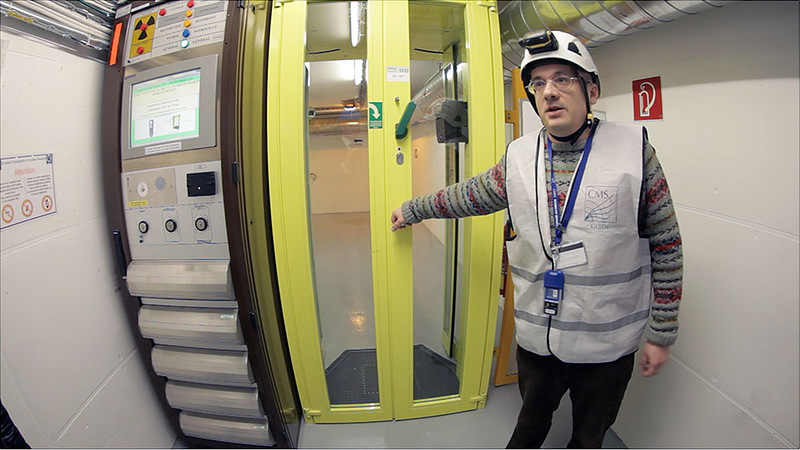
Then the corridor:

And voila! Detector:
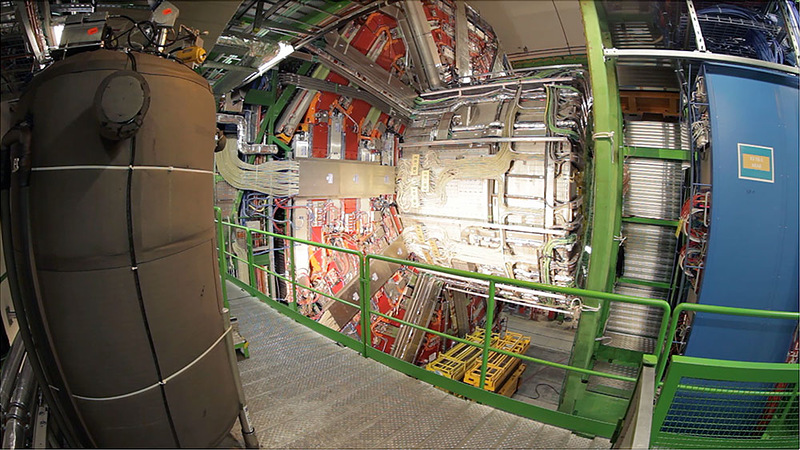
I will not hide, I was a little upset. After all, I wanted to see this:

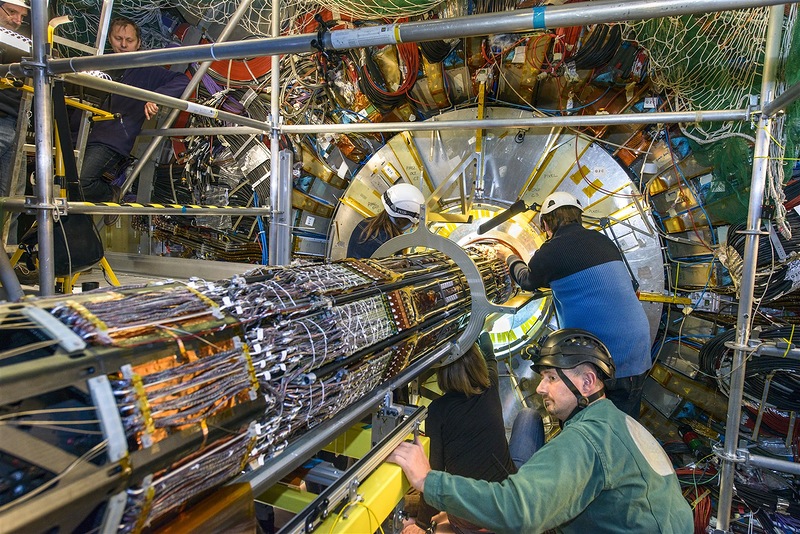
I did not say one important thing. The detectors have access only when the accelerator is stopped. It happens not often. They can turn off a week for a couple of hours or a day a month to do some kind of repair work or diagnostics. But even then only employees serving the detector have access to it. And for onlookers, like me, access is always closed at all.
But now the accelerator has been stopped for scheduled repairs and upgrades, and it lasts a year and will last as long. And it is precisely in these "wonderful" moments that let sufferers go there. It is clear that they are only allowed to look at a small piece. And I was just not very lucky, because just a month ago (according to our guide), the detector rings were shifted elsewhere and a review was opened to much more interesting things.
But I was also glad about this:
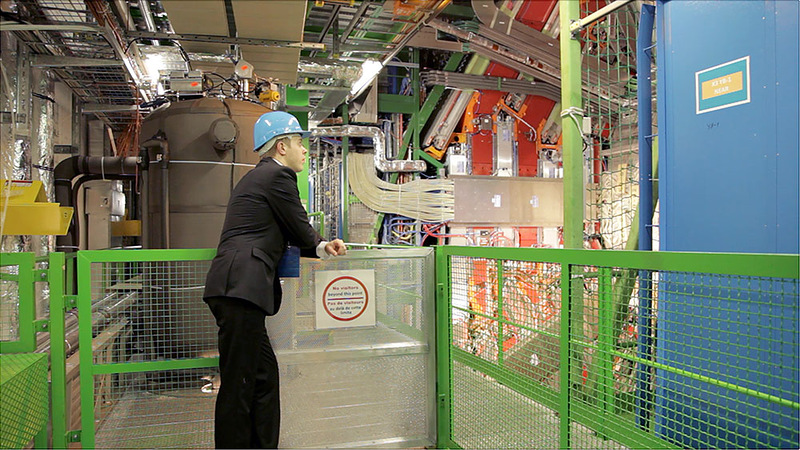

By that time it was already dark outside and we were tired (but satisfied!) Were driving back to Switzerland.
Soon we will translate and voice one clear and useful animated video that I shot there, and put it in the next post about CERN. Then I will try to make a series of simple and funny videos with explanations “on the fingers”, which will tell about the principle of operation of the accelerator, the detector and some more curious things at the LHC. And, perhaps, I will take a couple of experiments for children on the subject of elementary particles. These are the plans for January-February.
The book for children "Simple Science"
And finally, I want to again ask all those who have ideas or real opportunities to promote our book, to share thoughts on this matter. Any information will be useful to us. Here is information about the book and the application for the iPad .
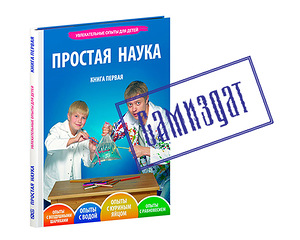
Source: https://habr.com/ru/post/209566/
All Articles